Culture Watch
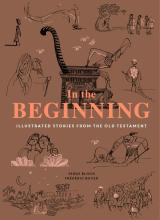
IT HAS BEEN A TIME of shadows and warnings, bursts of violence and the creeping stain of betrayal. Falsehoods, at first a dripping faucet over a tin bucket—the hint of failing seals and valves, the promise of future corrosion—have become a downpour. Disintegration seems the rule.
Where to find a true story, one that endures?
Scripture might seem the logical turn for a Christian. But I know my weaknesses. Left to my own devices, I cherry-pick favorite verses, I swerve away from difficult passages. I rarely read anything in the Old Testament except the prophets—and those while too often presuming I stand with them, already on their side, and God’s: Nothing for me to hear, except the echo of the woe and correction I’d like to dole out to others. A situational loss of hearing that is a sure path to perdition.
But then I was introduced to an unusual portal to the holy word, one that easily charmed its way past my conscious and unconscious scriptural biases: a 500-plus-page coffee-table book whose bronze cover is adorned with line drawings of people who are at turns winsome and ominous. With title and highlights in fluorescent orange, the design is reminiscent of some DayGlo-kissed whimsy from the 1960s. In the Beginning: Illustrated Stories from the Old Testament (Chronicle Books) retells, through images and spare prose that is both fresh and respectful of the scriptural sources, core stories of the Judeo-Christian tradition, from creation and the Garden of Eden to Daniel in the lions’ den.

WHEN DUTCH ARTIST Sarah van Sonsbeeck sees photos of people wrapped in metallic emergency blankets and referred to as “migrants” or “refugees,” she’s disturbed by the way this reduces their humanity. “This abstraction, I feel, is very dangerous,” she says.
Van Sonsbeeck brought hundreds of gold-and-silver Mylar blankets to Amsterdam’s Oude Kerk (“Old Church”) for a site-specific installation last May to September. The exhibit reflected upon the church’s colonialist history and the ways that Westerners can be unwittingly complicit in migration. The last point troubled the artist from the start of her project.
“As I am not a migrant, am I even entitled to address this?” she asked herself, before realizing she too plays a role. “I belong to and am a product of the Western society the migrants are migrating to,” she says.
Just as Mylar blankets can obscure people’s humanity, van Sonsbeeck’s installation, which evoked ripples in a golden sea when the light hit off the Mylar, covered many of the 2,500 tombstones marking some 10,000 graves that make up the church floor. Some of Amsterdam’s most prominent business people, politicians, and military leaders are buried beneath the 13th century church, and Rembrandt’s wife, Saskia van Uylenburgh, is another renowned long-term resident.
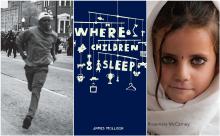
BOOKS ARE WINDOWS into other worlds and glimpses of experiences not our own. One of the most powerful ways books have worked in my life is to illuminate the truth that the world is a very unequal place. It started at a young age for me, my childish mind consumed with stories such as that of Helen Keller (and her teacher, Anne Sullivan, who for several years lived in a “poorhouse”) and missionary biographies of people such as Amy Carmichael and Gladys Aylward, who worked with children who had been trafficked or orphaned in other countries.
Even as a child I puzzled over why some children suffered so greatly and others didn’t. It wasn’t fair.
As much as I loved stories with fairy-tale endings, such as The Secret Garden or The Little Princess, I returned constantly to narrative nonfiction that exposed me to a wider, morally complex world. And this drive never left me.
Today, there are many books that address the topic of inequality in fresh, insightful, and provoking ways.
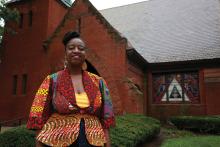
WALTRINA MIDDLETON'S VOICE lifts you to the highest highs with bellows of crisp spoken word. Seamlessly, her croons can plunge you down the rhythm of any blues-laced freedom song. Your heart is gripped with deep, rolling riffs of truth spoken.
Harnessing the power of pain is just one of her many spiritual gifts. Middleton is an ordained minister, activist, and artist with roots in the Gullah Geechee community in South Carolina. A self-professed country girl, she grew up in Hollywood, S.C., on the coastal Gullah Sea Island of Yonges, about 30 minutes outside of Charleston.
“It was beautiful—a swampland with dirt roads, farm, and fields,” she told Sojourners. “I made my grandparents’ hogs my pets before I realized they were actually dinner.”
It’s been a winding road on the path to self-discovery for Middleton, but she says music was there from the very beginning. “Music was central to our family,” she said. “It was an intergenerational medium that brought us together, but also rooted us in our faith.”
Her grandparents had 16 children, and all of them could sing or play an instrument. The family put together a group called the Middleton Gospel Singers that toured the local church community. “Part of the country circuit is to have some kind of gospel group,” she said. “The women in my family were the instrumentalists. I was always with my family when we would be in church all day going to these programs. The whole point was to worship God. It was just something that you did.”
Even when there wasn’t a church function or performance, Middleton says music was a part of her everyday life. “We had this big ol’ barn, and we would be in the barn sitting, rehearsing, and practicing,” she said. “Sometimes there would be a fire; sometimes people would just come, listen, and talk. While they were rehearsing, we would sit out there and eat crab.”
At these family gatherings, her artistic flair began to take shape. She admired her older cousins and says they heavily influenced her style. “They had this depth to them that I couldn’t describe,” she said. “It was very low and lamenting. I found myself trying to imitate their style. It also taught me that worship could also be lamenting.”
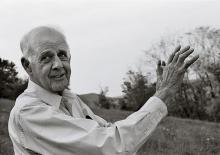
IT BEGINS WITH SPEED, the red flash of taillights in the night, the illuminated city bright against the dark. Over the images we hear a voice, resonant in its drawl as the images move to decimated mountains, poisoned streams, and rushing city crowds. The landscapes are swallowed by machines, the people lost to their digital devices as the voice offers a poem about a nightmare where all is sacrificed for an abstract “Objective.” On-screen we are seeing that nightmare, and it looks very much like our daily lives.
The speaker is Wendell Berry, the poet, farmer, and prophet who has been among America’s most sustained voices for the created world and the people and places that are among its members. Many of those who have read Berry say he changed their lives, but even though he has published more than 50 books and won literary accolades, including a National Humanities Medal given to him by President Obama, Berry is not particularly well known in many circles. It was that widespread lack of familiarity with Berry and the urgent goodness of his vision that prompted filmmaker Laura Dunn to create her latest film, Look and See.

DAN ZAK WAS FIRST struck by the absurdity of it all. As a reporter for The Washington Post, he was fascinated to learn that Sister Megan Rice, Michael Walli, and Greg Boertje-Obed had crossed forested hills in the middle of the night in Oak Ridge, Tenn., and reached the center of a government complex where possibly the most dangerous material in the world is enriched and stored.
Then Zak was captured by what was behind their action—the dramatic secrecy in the development of the first atomic bomb, the tragedy of its testing on U.S. soldiers and on the unsuspecting inhabitants of the Marshall Islands, the bungling bureaucracy surrounding the entire nuclear industry, and finally the hope and resilience of the resisters who work to eliminate these perilous weapons. His book Almighty: Courage, Resistance, and Existential Peril in the Nuclear Age (Blue Rider Press) is the result.
Rice, Walli, and Boertje-Obed called their action the Transform Now Plowshares, following a tradition of serious faith-inspired nonviolent actions dating back to 1980, actions often successful in reaching their nuclear targets and resulting in prison terms.
In July 2012, the trio cut through several fences—aided by malfunctioning motion sensors—at times moving through bright floodlight and past signs warning, “Deadly force authorized.” They hung a banner on one fence that proclaimed the words that were the source of their action, the injunction from Isaiah to “hammer their swords into plowshares and their spears into pruning hooks” (2:4).
They arrived at Y-12, a building that stores 800,000 pounds of weapons-grade uranium, the material that undergoes fusion when a nuclear bomb is detonated. Using traditional Plowshares action symbols, they streaked the white walls with the blood of activists, spurted from baby bottles they carried in their backpacks. They painted the building with the phrases “Woe to the empire of blood” and “The fruit of justice is peace.” They chipped away at the concrete walls with small hammers, and they waited.
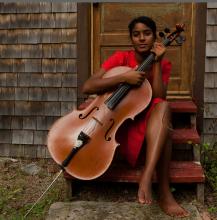
LEYLA MCCALLA wrote the title track of her latest album A Day for the Hunter, A Day for the Prey while imagining the experience of the Haitian boat people—political asylum seekers who packed into sailboats headed for the U.S. only to get intercepted by the U.S. Coast Guard mid-journey and sent back to the politically volatile and violent land from which they fled. In the early 1990s, the U.S. repatriated more than 34,000 of these Haitians before hearing their asylum cases and listening to their stories.
McCalla sings their stories now—in French, Haitian Creole, and English. The album’s title is a Haitian proverb that McCalla came across in an excerpt of Gage Averill’s book of the same name: A Day for the Hunter, A Day for the Prey. McCalla explained to NPR that the phrase captures the spirit of her Haitian ancestors, who overcame slavery only to fall in and out of political turmoil, but that the proverb also points to a universal experience: “It made me think of the roles that we all play throughout our lifetimes, how we are all trying to navigate our way through this world where sometimes it feels as though we are the hunter, and sometimes we are the prey.”
McCalla can make us feel like we’ve gone back in time through songs written years ago about people fleeing another time’s violence. But McCalla’s voice also pushes us to consider today’s Syrian boat people, intercepted by white waters, delayed by white fear. And she urges us to consider this historically systemic turmoil alongside our own feelings of personal displacement and victory. The album’s inspiration is as timeless as McCalla’s voice.
Only three of the tracks on A Day for the Hunter are Leyla McCalla originals. All the others she arranges and bolsters with vocals from former Carolina Chocolate Drops band mate Rhiannon Giddens, the jazz guitar of Marc Ribot, and the fiddle of Louis Michot. McCalla incorporates the talents of all these musicians without crowding the sound of her songs. The instruments and voices almost take turns, giving A Day for the Hunter an uncluttered, focused, and conversational feel.

NIETZCHE GOT SOMETHING RIGHT about the soul: namely, that music is essential to its survival. In reacting to philosophical tendencies to marginalize or ignore the place of music, dance, poetry, and painting, Nietzsche would insist on the central importance of the arts in any philosophical investigation.
In my own discipline of theology, a similar concern is justified: When theology has taken its cue from modern philosophy, it, too, has slighted the role of music in considering the question of God. The result is a portrait of soul in monotone pitches, without color, without polyphony. Instead of a guiding rhythm in one’s reflections, music is often relegated to a footnote or to an echo that reaches one’s ear in barely perceptible, muffled sounds.
The most glaring exception to this general rule is the portrait of soul in black and Latin traditions. As James Baldwin famously noted, it is almost solely through music that black people have been able to tell their story. The same can be said about Latin cultures: Music has been a crucial medium for communicating with the modern world, with one’s ancestors, and with God. It has been a defining feature of black and Latin-American identities—a key ingredient in the stew and spice of these cultures.
Given the storytelling capacity of music in these cases, I believe that any theology worthy of the Christian conviction of incarnation—where God is embodied in the vast rainbow of human cultures—might want to begin by calibrating its body and soul to the frequencies of music. With music booming in our ears, we might get an alternative history of religion and culture, told at a sonic level, in the beats of a drum, a bass line, chant, or grunt. We might learn about cultural styles and struggles left off the written record of modern European accounts of the West, that exist only as oral and folk traditions.

WHEN WE THINK OF ART, we usually think of paintings, literature, or film: media that take us outside of ourselves and help us experience a time, place, feeling, or philosophy. Works of art have the potential to move us, sometimes profoundly.
What we don’t think of—not immediately, anyway—are video games. Games are artifacts of pop culture. At best, they’re fun, relatively benign distractions. At worst, they’re violent, desensitizing affairs promoting antisocial behavior. Video games are not, generally speaking, considered transformative or artistically ambitious.
But that might be changing. In recent years, developments in the gaming world covering everything from graphics to narrative structure are changing the low-culture perception of video games, with complex stories that challenge players and sometimes even help them consider the theological.
“Video games are this amazing reflection of how we see the world,” video game developer Ryan Green told Sojourners. “There’s a relationship between the player and the creator of the game that also reflects how we view God. You can see the hands of the designer at any given point.”
Letting love change you
Green and Numinous Games, the production company he co-founded with his wife, Amy, are at the forefront of this movement. They’re the creators behind That Dragon, Cancer, a game detailing the emotional and spiritual journeys of the Greens during their son Joel’s four-year battle with cancer, from which he died at age 5.
That Dragon, Cancer is an empathy game, a video game allowing players to interact and identify with a specific emotional or social experience, with the goal of making the player more sensitive to the issue it presents. In the case of That Dragon, Cancer, the Greens invite players to share their process of hope, doubt, and mourning through a series of interactive vignettes reflecting their experiences during Joel’s illness.

We are the long grass and anxious wind,
the generations, speaking softly, between
the lines of history.
IN THE POEMS OF PARNESHIA JONES, 35, the lines of black history that angled north from the Deep South after the First World War empty into the bruised and tender histories of family and community.
The lines above are from “Legacy,” one of the poems from her first collection, Vessel (Milkweed Editions), dedicated to Evanston, Ill., Jones’ hometown, and the home of Shorefront, the organization that documents black lives on the North Shore of Chicago.
“I had a lot of storytellers around me growing up,” Jones tells Sojourners. “My grandmother was a storyteller, my grandpop was a storyteller. I was always the youngest of the group, so I was trained to listen. When you listen to everyone else, you carve out a space to listen to yourself. Young poets should listen more to their families, to the voices they heard growing up.”
The poet says she was raised in her grandfather’s juke joint. He migrated north from Mississippi. Her first dog came from Gypsies who hung out outside his clubs.
Jones’ voice, even when banked by the din of a mid-Manhattan restaurant, is soft, leisurely. Telling her story, she will not be hurried. Her story begins with a portentous name, the spawn of chance.
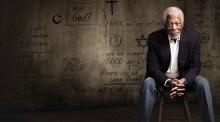
FEELING STRESSED BY CURRENT EVENTS, weary of ugly public discourse and the contentious sniping among even those who claim the same political party or faith? Maybe what you need is context—a look at the sweep of history and the enduring mysteries of existence. It’d be nice if there were a guide. Perhaps someone with a rich, velvety voice and calm presence to accompany you to far-off places and times—even better, to take you there on a private jet—and to not only ask deep questions but arrange for experts to posit answers.
You may be in luck: The Story of God is a six-part documentary series scheduled to air weekly on the National Geographic cable channel beginning on April 3. Actor, producer, and Story host Morgan Freeman travels the globe to glimpse how some religions (and a bit of modern neuroscience) attempt to answer our big human questions. Is there life after death? How was the universe created? Will the world end, and how? Who is God? What is the root of evil and how has our idea of it changed over time? Are miracles real?
(Let’s just get this out of the way now: Yes, Freeman has played God in two feature films, Bruce Almighty and its sequel Evan Almighty. No, he is not reprising the role in The Story of God.)
Given the enormity of the task Freeman and the other producers set for themselves—wrestling with theological conundrums, including some perspective from ancient beliefs and each of the five major world religions (Judaism, Christianity, Islam, Hinduism, and Buddhism), shooting in 13 countries, and whittling all that footage down to six hours total for airing—they did admirable work. It’s impossible to go deep or broad into a religion within those kinds of constraints, but the threads of history and theology presented, and the experts presenting them, are interesting and legitimate. There are bits of melodrama in the framing of Freeman’s quest and in some of the dramatizations of historic events, but this is edutainment TV, not a graduate school seminar.
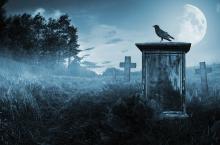
ABOUT 20 YEARS AGO, just after she and her husband had bought a house in the countryside outside of Louisville, Ky., Kathleen Driskell returned home from the grocery to find her driveway filled with cars. With one arm grasping bags of food and the other holding on to her young son, she looked around to see what was happening. Mournful figures in dark coats were moving back and forth in the lot next door to her house. And then her eyes rested on something that made her jaw drop: a hearse.
On one hand, Driskell shouldn’t have been surprised. The house she and her husband purchased was actually an old country church dating from the 1850s, which they had begun converting into a home, transforming the sanctuary into an open living and dining room and using the honey-colored pews to build a staircase. Like most rural churches from the 19th century, it was right beside a graveyard. But the old preacher who sold them the building had assured them it was no longer in use, that there would be no more burials. “I asked him flat out,” she recalls with a smile. “And he said that it was full up and it’s been full up.”
Over the years, there have been eight or nine more burials in the graveyard next door. But after recovering from her initial shock at happening upon that first scene, Driskell realized that she didn’t mind. “I just don’t think about graveyards that way,” she says. “I never really have thought about them as being spooky places.” Instead, she has found herself inspired by the cemetery and its dead—so intrigued, in fact, that she has written a poetry collection about her experience with her “neighbors,” as she calls them, documenting her literal and imaginative walks among the tombstones.
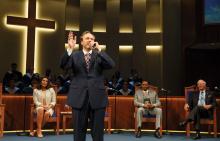
“Make us one,
Make us one body,
Because when we are one body,
We see something we cannot see
By ourselves ...
In the name and in the blood of Jesus,
Amen”
SO OPENS LUCAS HNATH’S PLAY The Christians, which premiered at the Humana Festival of New American Plays in 2014 and at Playwrights Horizons Off-Broadway in 2015. The play is described as a “kind of sermon,” sometimes literal, sometimes figurative. The Christians marks a distinct turning point in the history of American theater, in that its evangelical main character’s struggle with ideas is treated as a serious subject that reflects on a nation’s moral dilemma.
Religious themes are hardly a new topic for U.S. theater, but most often they’ve been treated negatively. Arthur Miller’s plays, such as The Crucible and After the Fall, treat religion as an institution of animosity, even a kind of antagonist. Tennessee Williams uses religion as a quaint and antiquated emblem of Southern culture—such as in The Glass Menagerie, where the character Amanda says, with exaggerated sympathy, “You’re a Christian martyr.” Then there’s Inherit the Wind, by Jerome Lawrence and Robert E. Lee, a dramatic treatment of the Scopes Monkey Trial that depicts Christians as hostile and uneducated. If the American theater were an accurate mimesis of American truth, Christians would be lying, narcissistic, two-faced, McCarthyist bigots.
The Christians is a completely different story, in which the dramatic action depicts a loving, thoughtful pastor as the protagonist up against the institution of the church. Each character is treated with due reverence and given a fair argument, so that there are no easy answers, and the audience is left grappling with the central struggle. The play is reminiscent of Norwegian playwright Henrik Ibsen’s An Enemy of the People (a quote from this play is The Christians epigraph), where a citizen who tells the truth faces the wrath of a village that turns on him. Both plays explore deep ethical issues as the central characters risk their reputations and their livelihoods through standing by their principles.
The first scene of Hnath’s powerful drama is a contemporary church service, highlighted by PowerPoint slides, with a sermon based on Isaiah 30:12-13: “Because you have rejected this word and relied on oppression and depended on deceit, this sin will become for you like a high wall, cracked and bulging, whose collapse comes suddenly in an instant.”
The sermon is delivered by the energetic and youthful Pastor Paul at an evangelical megachurch that could be anywhere in the United States. He goes on to describe what he views as the crack in his church’s foundation, delivered with the smooth tones of a master orator who has always won the favor of the congregation. He tells a story he heard at a pastor’s conference about a boy, in a country ravaged by violence, who rushes into a burning building to save a little girl and dies from his burns. Pastor Paul is tortured by this story, told to him by a missionary who mourns for the boy saying, “What a shame, I didn’t save this boy for Christ ... what a shame I didn’t save this boy from hell.”

JUSTICE-CONSCIOUS clergy and theologians have been drawn to the Black Lives Matter movement by resonating eschatological beliefs and prophetic ethics. However, movement motivations differ for many of the millennial activist leaders whose ethical sensibilities and theological worldview are not framed necessarily by doctrinal faith, ecclesiology, or trust in the church as an arbiter of God’s right and wrong.
Instead these millennial activists, unlike the boomers allied with them, relate to ethical messages found in popular cultural streams of hip-hop and spoken word that voice this generation’s pervasive questioning about theodicy—the presence of good and evil—in the world. These lyrical works articulate a generational critique of lived experiences that warrant further ethical and theological analysis. The challenge for the church and its faith leaders is: Do we listen?
In a Sojo.net post last August, I noted that the 2015 anthem chant “Hell You Talmbout,” by Janelle Monáe and Wondaland, voiced an ethical polemic on prevalent state-sanctioned practices of extrajudicial injustice. The chanted names of those killed serve to demand their remembrance as persons. As a rallying cry across the nation, the call-and-response lyrics convey a hymnody challenging the anonymity of invisibility.
Similarly, rap artist Kendrick Lamar’s 2015 song “Alright” was rapidly adopted in the Black Lives Matter movement as a counterhegemonic anthem that pushed against police violence with a first-person examination of mortality on the margins.
Lamar’s lyrical messaging in “Alright” linked cultural expression with socio-theological meaning to craft a survival ethic. Intentional use of the N-word sears the embedded consciousness of an older generation for whom the term is historically tied to the evils of slavocracy and Jim Crow segregation. However, Lamar intentionally turns to the signifying trope and demoralizing images that cast “othered” black and brown bodies into racially pejorative stereotypes. In the present millennial context, the N-word is used as a catchphrase of familiarity among peers but is also acknowledged as a pejorative used by police to identify or label black bodies—as many audio-visual recordings of incidents attest—while extrajudicial methods are physically applied. Use of repetitive lyrics in “Alright” amplifies an epistemological and ethical conundrum about systematized oppression. But do we listen?
Wouldn’t you know—we been hurt, been down before
N----, when our pride was low, lookin’ at the world like, “Where do we go?”
N----, and we hate po-po; wanna kill us dead in the street fo sho
N----, I’m at the preacher’s door
My knees gettin’ weak, and my gun might blow
But we gon’ be alright
The images in the video for “Alright” expose, with satirical irony and stark reality, that lived experiences in neighborhoods on the brink of ghettoized existence are linked to systemic control by powerful, privileged forces. Lamar’s juxtaposition of a bodily spirit in flight creates tension between the evils of oppression and a spiritual will to survive. This theoethical tension is captured when a voiced recognition of the “evils of Lucy” (Lucifer) all around is jolted into silence when a uniformed figure fires a single gunshot that sends Lamar’s black body careening off the high perch of a street light.
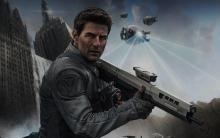
GROWING UP, my pop culture heroes were all nerds. I gravitated toward the quippiest, smartest characters I could find; misunderstood geniuses with an arsenal of world-saving ideas and killer one-liners, who swaggered off awkwardly into the sunset, toting books the same way Clint Eastwood did his gun.
These characters are still important to me, but here’s the problem: Nearly all of them were men. In idolizing Ghostbusters’ Egon Spengler and Jurassic Park’s Ian Malcolm, I grew up thinking that, if I wanted to be like them, I had to reject all things girl. It took me a long time to realize I could be cool and smart and feminine.
Movies and TV teach us to love good guys and hate bad guys. But when heroes only look a certain way, says writer and Pepperdine University professor Craig Detweiler, we come to believe certain population groups are the only ones who can inhabit those roles. “Movies paint people in ... stark categories, and those categories transpose into everyday life,” Detweiler said in an interview with Sojourners. “If you only see one kind of hero, you only have one kind of heroic role model.”
A narrow definition of heroism is as much a race issue as a gender issue. Leslie Foster, a black filmmaker, says he’s often grappled with the impact popular culture has on what society deems normal.
“I’ve realized that it had an effect on what I found aesthetically attractive, and I’ve had to untangle that as an adult,” Foster told Sojourners. “I tell people to look at the makeup aisle, and see what colors get categorized as ‘nude.’ It’s always white.”
The power to change minds
The stories we encounter can reinforce or damage how we see ourselves, and how we categorize others. When done well, they can encourage understanding between different races, genders, or sexual orientations. Research into parasocial relationships (the feeling of emotional attachment to fictional characters) and intergroup contact theory (the idea that ethnically diverse social relationships decrease prejudice) has shown that good representations of these groups in TV and film positively affect viewers’ opinions of them.
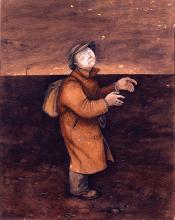
CANADIAN ARTIST William Kurelek was influenced both by his experiences with mental illness and his conversion to Catholicism. He would eventually be considered psychiatrically recovered, but he was institutionalized as a young man in the mid-’50s, during which he created one of his best known early paintings, showing a blind man wandering in a desert, captioned “Where am I? Who am I? Why am I?”
These are foundational questions for all of us, not just a gifted artist in a time of suffering. The institutional church tends to assert that the answers to such questions are, if not simple, at least imminently knowable: Just pull up a pew and stay awhile. Many of us who are already believers come to assume that our job is to have a spiritual GPS always on, ready to point others in the “right” direction.
But of course, finding God or our place in the universe has rarely been that easy. Church may or may not be the place where we who are lost are found. The person we’ve always claimed to be may be shattered by unexpected events or discoveries. Or theologies that we once took for granted may come to ring hollow. As Diana Butler Bass writes in her new book, Grounded: Finding God in the World, “millions of people are navigating the space between the secular world and conventional theism. They are making a path between the two that nevertheless embraces both, finding a God who is a ‘gracious mystery, ever greater, ever nearer’ through a new awareness of the earth and in the lives of their neighbors.”
Several other very distinct books released this year wrestle with the shape of faith, finding or naming God, and how secrets revealed can shift our self-understanding and shake even our deepest beliefs.
In her best-selling 2013 spiritual memoir, Pastrix: The Cranky, Beautiful Faith of a Sinner & Saint, Nadia Bolz-Weber described her journey from fundamentalist childhood to alcoholic rebel to believer with a priestly call. A tattooed, weight-lifting former standup comedian who is now a Lutheran (ELCA) pastor, Bolz-Weber helped found House for All Sinners and Saints in Denver, which combines ancient liturgy and theological orthodoxy with artistic expression, social justice, and radical inclusion.

FOR NON-WHITES born in post-apartheid South Africa, the country promised equal rights and legal freedom. But the first generation of “born frees,” as they are called, also entered a world where HIV/AIDS was destroying their families and communities. Many children and teens were left largely fending for themselves in townships plagued by poverty, disease, and violence.
Author Kimberly Burge, a Sojourners contributing writer, entered this world not as an aid or social worker, but rather on a Fulbright scholarship, to form a writing group for adolescent girls in the township of Gugulethu. Too old for the child-centered programs and too young for adult assistance, the girls were falling through the cracks of established programs. The writing club offered them the opportunity to creatively express their fears, frustrations, and dreams.
To Burge’s credit, the book is not primarily about her or her experiences. She keeps the focus on the girls themselves and the often breathtaking words and thoughts they express in their writing. Burge is not there to rescue them, but rather to help them find their voices. She acts less as a teacher than a peer, encouraging girls to lead the group themselves and prompting them to write about such topics as “I wish I could ...” or “I need to find a place ...”
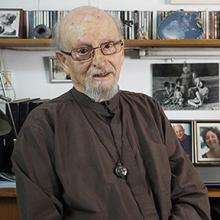
TUVIA RUEBNER HAS earned the lament he wrote for King David, Israel’s better-known sorrow bearer. The poet came into the world 91 years ago in Pressburg-Bratislava, Slovakia, under Nazism’s shadow. It is a shadow he managed to separate himself from physically, but which sticks to him philosophically and is at the core of his poetry. The parched sound of random loss is the root sound in many of his poems. The spawn of an unimaginable yesterday, Tuvia Ruebner is more than anything a poet of today.
His parents, his grandparents, and his little sister Litzi all perished at Auschwitz in 1942, a year after he immigrated to British Mandate Palestine. Forty years after their deaths, Ruebner’s first son, Moran, was sent to fight in Israel’s first Lebanese war. Moran left for South America the following year, estranged from his country and its wars, and after a few letters, was never heard from again.
In Ruebner’s poem “[My father was murdered],” one by one he enumerates his losses:
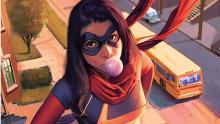
I REMEMBER THE FIRST TIME someone told me I couldn’t do something because I was a girl. I was in preschool, preparing for an epic game of Teenage Mutant Ninja Turtles with a group of boys. I was playing April O’Neil, the Turtles’ journalist ally. As we started our game of pretend, my teacher came over to ask what we were doing.
“Playing Teenage Mutant Ninja Turtles,” I responded.
“Oh, you shouldn’t be playing that.”
“But I’m April,” I explained. “I’m a girl.”
“No, girls don’t play games like that,” she told me, and directed me toward the finger paints.
Whatever my teacher’s intentions, the damage was done. From that day on, superheroes and all things related were a “boy thing.” That meant the X-Men, Batman, Superman, and, yes, Donatello and his human-reptile hybrid team were all off-limits. I eventually grew to love comics as a teenager and an adult, but I was aware that they rarely featured anyone other than white men (or, occasionally, heavily objectified women) as the heroes.
Thank goodness for Kamala Khan.
Kamala is the teenage protagonist of Marvel Comics’ rebooted Ms. Marvel series. She’s a clever, funny 16-year-old living in Jersey City, N.J., who, in addition to having superpowers, writes superhero fan fiction, plays video games, and struggles with parent-enforced curfews. She also happens to be the second-generation daughter of Pakistani immigrants and a practicing Muslim.
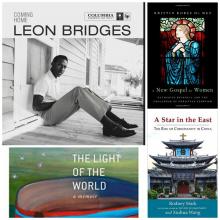
Old New Soul
Leon Bridges is a 25-year-old gospel and soul singer from Texas with a vintage sound and sheepish stage presence. In six months, Bridges went from washing dishes full-time to selling out multiple SXSW shows. His new album, Coming Home, features smooth love songs, both romantic and religious. Columbia